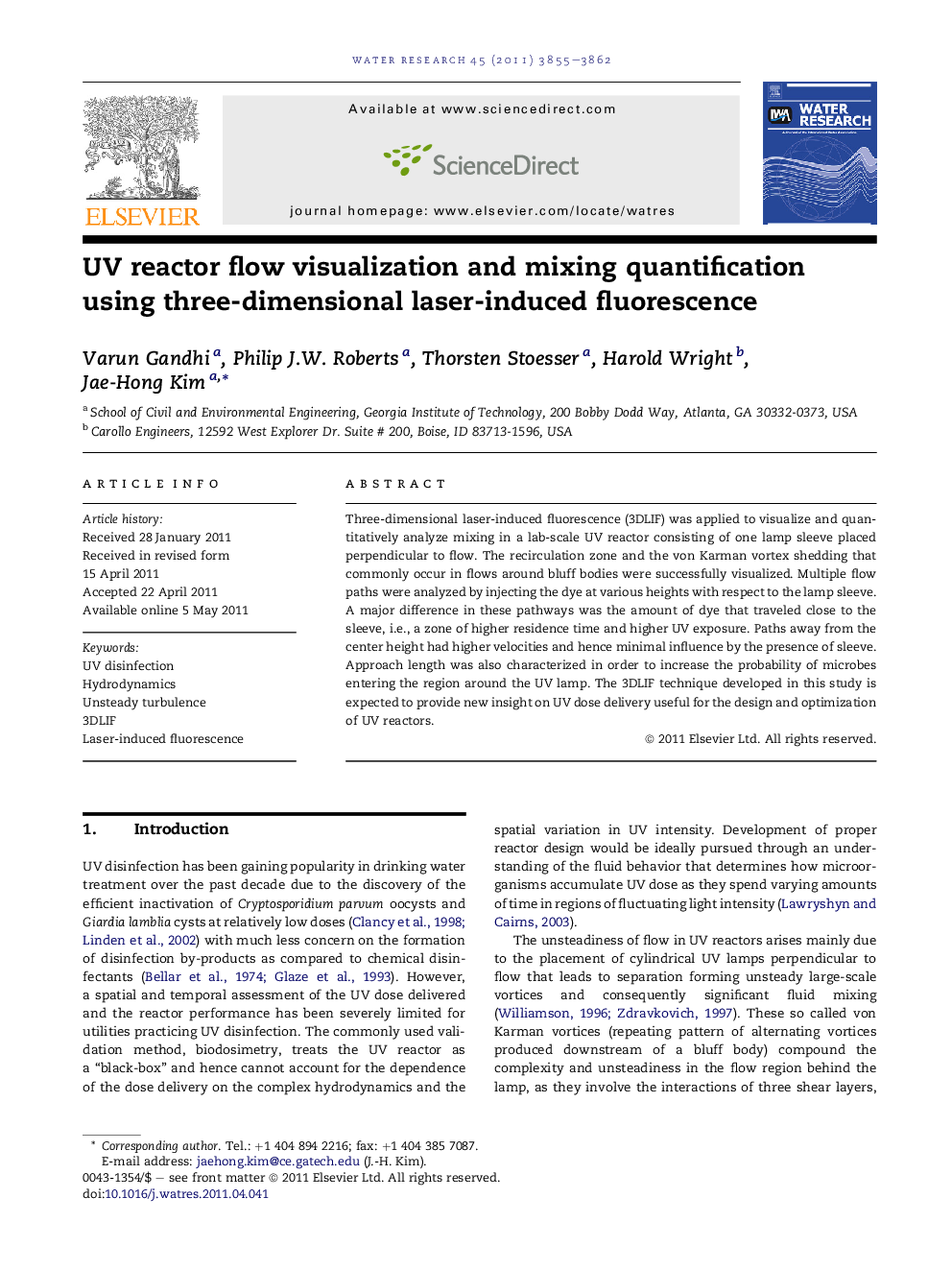| Article ID | Journal | Published Year | Pages | File Type |
|---|---|---|---|---|
| 4484084 | Water Research | 2011 | 8 Pages |
Three-dimensional laser-induced fluorescence (3DLIF) was applied to visualize and quantitatively analyze mixing in a lab-scale UV reactor consisting of one lamp sleeve placed perpendicular to flow. The recirculation zone and the von Karman vortex shedding that commonly occur in flows around bluff bodies were successfully visualized. Multiple flow paths were analyzed by injecting the dye at various heights with respect to the lamp sleeve. A major difference in these pathways was the amount of dye that traveled close to the sleeve, i.e., a zone of higher residence time and higher UV exposure. Paths away from the center height had higher velocities and hence minimal influence by the presence of sleeve. Approach length was also characterized in order to increase the probability of microbes entering the region around the UV lamp. The 3DLIF technique developed in this study is expected to provide new insight on UV dose delivery useful for the design and optimization of UV reactors.
► Flow in a lab-scale UV reactor was visualized for the first time using 3DLIF. ► Mixing in the UV reactor was highly unsteady not only spatially but also temporally. ► Flow past a UV lamp was characterized by the presence of recirculation zone and vortex shedding. ► Trajectory of tracer strongly depended on upstream point of entry. ► Sufficient downstream length would be required to obtain homogenous water sample at the outlet.
